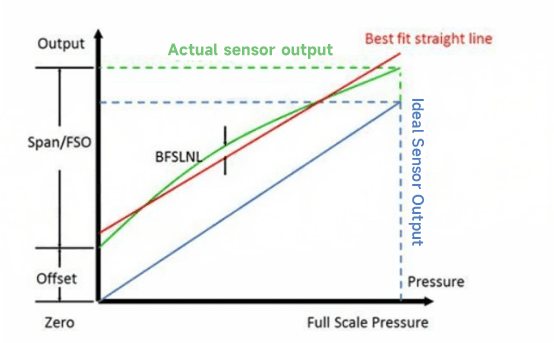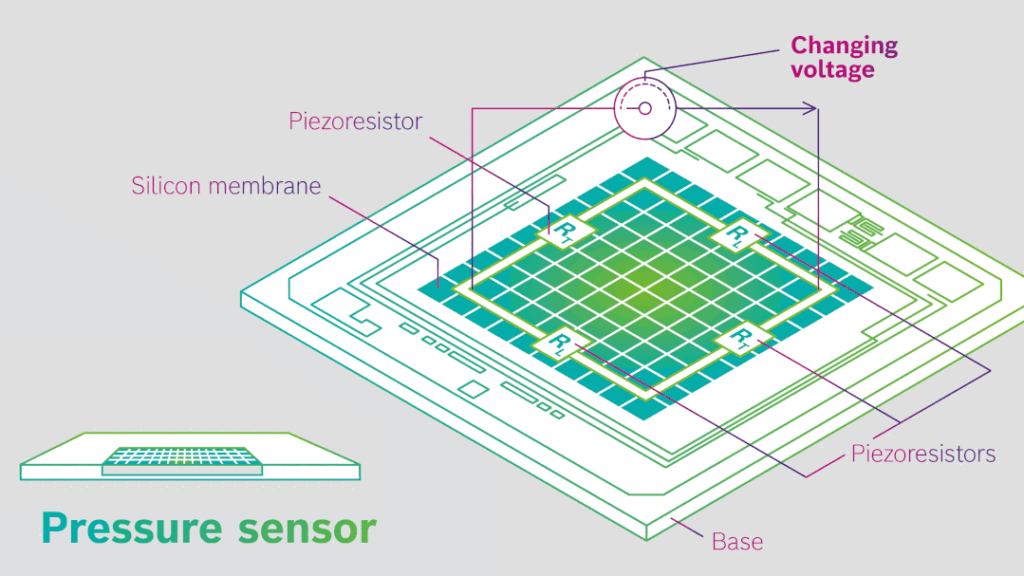Catalogus
Barometric pressure sensors play a pivotal role in modern meteorological forecasting systems, serving as fundamental instruments for atmospheric monitoring and weather prediction. These sophisticated devices have revolutionized our ability to understand and predict weather patterns with unprecedented accuracy.
Basic Functions and Principles of Barometric Pressure Sensors
Barometric pressure sensors are precision instruments designed to measure the absolute pressure of gases in the atmosphere. These devices utilize sensitive internal components such as thin membranes, diaphragms, and variable capacitance silicon membrane boxes to detect atmospheric pressure variations. The sensors convert these physical changes into electrical signals, which are then processed and converted into corresponding meteorological data, including atmospheric pressure values.
The operational principle relies on the deformation of sensitive elements under varying atmospheric pressure, creating measurable changes in electrical properties such as resistance, capacitance, or voltage output.
Applications of Barometric Pressure Sensors in Meteorological Forecasting
Atmospheric Pressure Measurement
measurement of atmospheric pressure changes, enabling meteorologists to understand pressure distribution patterns across different regions. This forms the foundational data for meteorological and climatological research.
When atmospheric pressure continuously decreases, it often indicates the approach of low-pressure systems, potentially bringing rainfall or strong winds. Conversely, rising atmospheric pressure typically signifies clearing weather or high-pressure system dominance. These measurements provide crucial reference data for weather forecasting operations.
Altitude Measurement and Atmospheric Dynamics
Barometric pressure sensors can determine the altitude of objects such as aircraft and vehicles, helping researchers understand atmospheric flow dynamics and topographical influences on weather patterns. This capability is particularly valuable for aviation, transportation, and atmospheric research applications.
In aviation, aircraft require accurate meteorological information during takeoff, cruise, and landing phases. Atmospheric pressure sensors provide pilots with reliable meteorological data support, ensuring flight safety and operational efficiency.
Multi-parameter Analysis and Modeling
These integrated multi-parameter datasets provide more comprehensive and accurate information for weather forecasting and climate change prediction, enabling sophisticated numerical weather prediction models.
Barometric pressure sensors can be integrated with other sensing devices, including humidity sensors, temperature sensors, wind speed monitors, and solar radiation detectors, to perform comprehensive multi-parameter analysis and atmospheric modeling.
Storm Tracking and Severe Weather Detection
Advanced barometric pressure sensor networks can detect rapid pressure changes associated with severe weather events, including hurricanes, tornadoes, and thunderstorms. The ability to monitor pressure gradients and sudden drops helps meteorologists issue timely warnings for potentially dangerous weather conditions.
Advantages of Barometric Pressure Sensors in Meteorological Forecasting
High-Precision Measurements
Modern barometric pressure sensors offer exceptional measurement accuracy, capable of detecting pressure changes to two decimal places or better. This precision is crucial for meteorological and climatological research, where small pressure variations can indicate significant weather pattern changes.
Real-time Monitoring and Data Recording
Barometric pressure sensors provide continuous, real-time monitoring and recording of atmospheric pressure variations, offering meteorologists consistent and accurate data support for forecasting operations. This continuous data stream enables the detection of subtle trends and rapid changes.

Wide Applicability and Versatility
These sensors are suitable for various applications, from fixed meteorological station observations to mobile platform measurements on aircraft, ships, and ground vehicles. Their versatility makes them invaluable across multiple sectors.
Integration Capabilities
Modern sensors can be easily integrated into automated weather station networks, providing seamless data transmission and integration with meteorological databases and forecasting systems.
Practical Application Cases
Meteorological Station Operations
Weather stations typically incorporate barometric pressure sensors as core equipment for real-time monitoring and recording of meteorological data. These stations form networks that provide comprehensive regional weather monitoring capabilities, supporting both local and national forecasting services.
Aerospace Applications
In aerospace industries, barometric pressure sensors provide accurate meteorological data support for pilots and astronauts, ensuring the safety of flight and space navigation operations. They are essential components in aircraft altimeters and weather radar systems.
Agricultural Production Guidance
Farmers utilize barometric pressure sensor data to understand weather conditions and make informed agricultural management decisions. When pressure changes indicate incoming precipitation, farmers can adjust irrigation schedules, harvesting plans, and crop protection measures accordingly.

Marine Weather Monitoring
Ocean-based weather stations and ships use barometric pressure sensors to monitor maritime weather conditions, crucial for shipping safety and offshore operations. These measurements help predict storm systems and dangerous sea conditions.
Research and Climate Studies
Scientific research institutions use high-precision barometric pressure sensors for climate monitoring and atmospheric research, contributing to our understanding of global climate patterns and long-term weather trends.
Future Developments and Innovations
IoT Integration and Smart Networks
The integration of barometric pressure sensors with Internet of Things (IoT) technologies enables the creation of smart weather monitoring networks, providing unprecedented spatial and temporal resolution in atmospheric monitoring.
Artificial Intelligence Enhancement
Machine learning algorithms are increasingly being applied to barometric pressure data analysis, improving forecast accuracy and enabling the detection of complex weather patterns that traditional methods might miss.
Conclusie
In conclusion, barometric pressure sensors play an indispensable role in meteorological forecasting. Through real-time monitoring and measurement of atmospheric pressure changes, they provide essential data support for weather prediction systems. Their high-precision measurement capabilities, real-time monitoring features, and wide applicability make them fundamental tools with broad application prospects in meteorological forecasting and atmospheric science research.
De bovenstaande introductie schetst slechts het oppervlak van de toepassingen van druksensortechnologie. We zullen doorgaan met het verkennen van de verschillende soorten sensorelementen die in verschillende producten worden gebruikt, hoe ze werken en hun voor- en nadelen. Als u meer informatie wilt over wat hier wordt besproken, kunt u de gerelateerde inhoud verderop in deze handleiding bekijken. Als u weinig tijd heeft, kunt u ook hier klikken om de details van deze handleidingen te downloaden Luchtdruksensorproduct PDF -gegevens.
Voor meer informatie over andere sensortechnologieën kunt u terecht Bezoek onze sensorenpagina.

